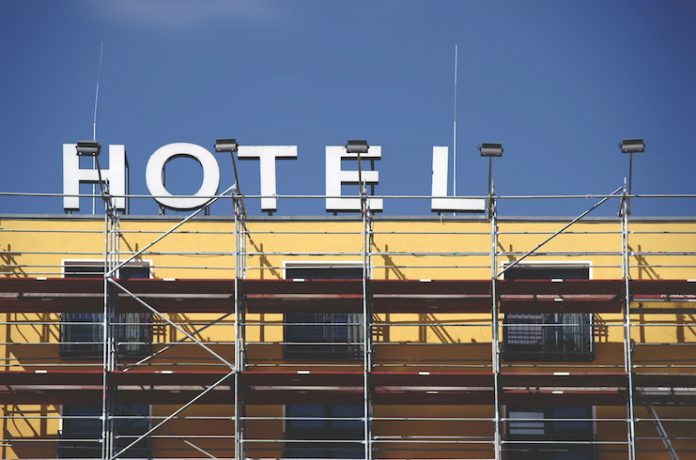COVID-19 has created a myriad of troubles for hotel owners—and sometimes trouble means opportunity. As the industry slowly rebounds, savvy owners may see this as a good time to evaluate their hotel brand flag. With over 350 hotel brands, there is little reason to stick with one that is failing. The most likely factors to change a hotel brand or flag are an underperforming hotel, a flag that has not delivered enough revenue through brand channels, too much competition from the same family of brands, or when the franchise is nearing the end of its term.
There are various contractual clauses that may prove to be a viable option for an owner looking to make a brand change in a struggling hotel where the brand isn’t driving the value expected.
Below are three criteria to help owners decide which hotel brand flag to choose.
Performance
The first, and most obvious, question to ask is “How well is your current hotel performing?” Consider these five points:
- Market share. Has the hotel brand performed as advertised? Is the property attaining the penetration suggested by the brand? Is the hotel beating projections or underperforming? If the brand is a strong one, it should meet or exceed the penetration projections, show index growth, and continue to perform year after year. If the hotel is not performing up to its projected share, then that would be the time to assess how well other brands may be performing in the marketplace.
- Source of business. While OTAs, Cvent, and social media have helped level the playing field for independent hotels, sourcing corporate, group, and contract demand remain a strength of brands versus independents. Large brands have a national sales force and the ability for individual hotels to plug into national corporate agreements and to receive group leads. Some are stronger in attracting certain sources of demand or key accounts than others, so studying performance by segment is important in assessing current and potential performance of a brand.
- Brand contribution and cost of acquisition. Brand contribution can vary from 30 percent to 60 percent of a hotel’s total occupancy. Each channel has a different cost of consumer acquisition. When evaluating the cost of each channel or segment, the cost of the franchise fees, loyalty fees, and marketing fees of a brand have to be factored into the cost of acquisition calculation.
- Gross Operating Profit. Brands point to top-line performance to show flag strength. While room revenue is certainly a critical consideration, there’s an expression in the industry: “You can’t take RevPAR to the bank.” It’s profit that will flow into owners’ pockets, and while driven by top-line revenue, it’s impacted by required programs, related operating costs, and fees imposed upon owners by franchisors. When evaluating flag choices, owners need to review operating data across multiple flags and evaluate a brand’s standards for how each flag will impact profit on similar revenue levels.
- Year-over-year growth. Has the current brand shown growth in both revenue and profit year over year (YOY)? Not every hotel will grow YOY every year, but if there has not been consistent YOY growth in revenue or RevPAR index, then this is something an owner should consider if deciding to make a change. What is the room revenue contribution from the brand? If the brand channel does not contribute more than the OTAs, are the fees worth it? Is the franchise growing, or has franchise growth stagnated? Some of the more established brands, even after years in the market, still increase their footprint every year.
Availability and Brand Density
Another major factor when considering a flag switch is the availability of brands within the hotel’s local trade area or neighborhood. In many markets, it is likely that many of the best flags are already taken. The good news is that there are many choices out there, but owners need to also consider current performance and property improvement plan (PIP) costs—not just what is available.
PIP Costs
Capital investment is a major consideration when contemplating a flag change. A PIP is the cost required to meet a hotel brand’s standards and the return on that cost could be a potential barrier to making a change. All hotel franchises have brand standards a new owner must adhere to but making standard changes to an existing property can be costly. Items such as guestroom and bathroom design, signage, bedding packages, and technology are all considerations when it comes to a PIP. Some brands have more stringent fire and life safety requirements than local code, also affecting the PIP cost. Each brand will enumerate the standards that hotels must meet in the franchise disclosure document (FDD). The cost of changeover might not be evident, but estimates can be made and should be evaluated.
While there are other factors to consider, current performance, PIP, and brand viability are the more critical ones for any owner to evaluate when choosing between different flags. In today’s environment, selecting the right brand flag can make a tremendous difference to the bottom line and hotel value. Owners should take their time to evaluate the pros and cons of each flag choice before making that critical decision. With franchise agreements lasting upward of 20 years, that commitment runs for a long time and will last through many economic cycles, both good and potentially troubling. Turn the troubles encountered into opportunities.
About the Author
John Paulsen, CHAM, CHHE, is senior vice president of hotelAVE. Paulsen has more than 30 years of hospitality experience in hotel operations and asset management.
Farewell to Flags
Rather than stick with a failing brand, hotel owners should evaluate the possibility of operating independently. According to STR, independent hotels account for approximately 40 percent of all hotels. Distribution through OTAs and accessibility to audiences via social media channels may make being an independent hotel even more enticing for hotels that are currently aligned with a brand, particularly when considering the costs associated with maintaining that brand.











